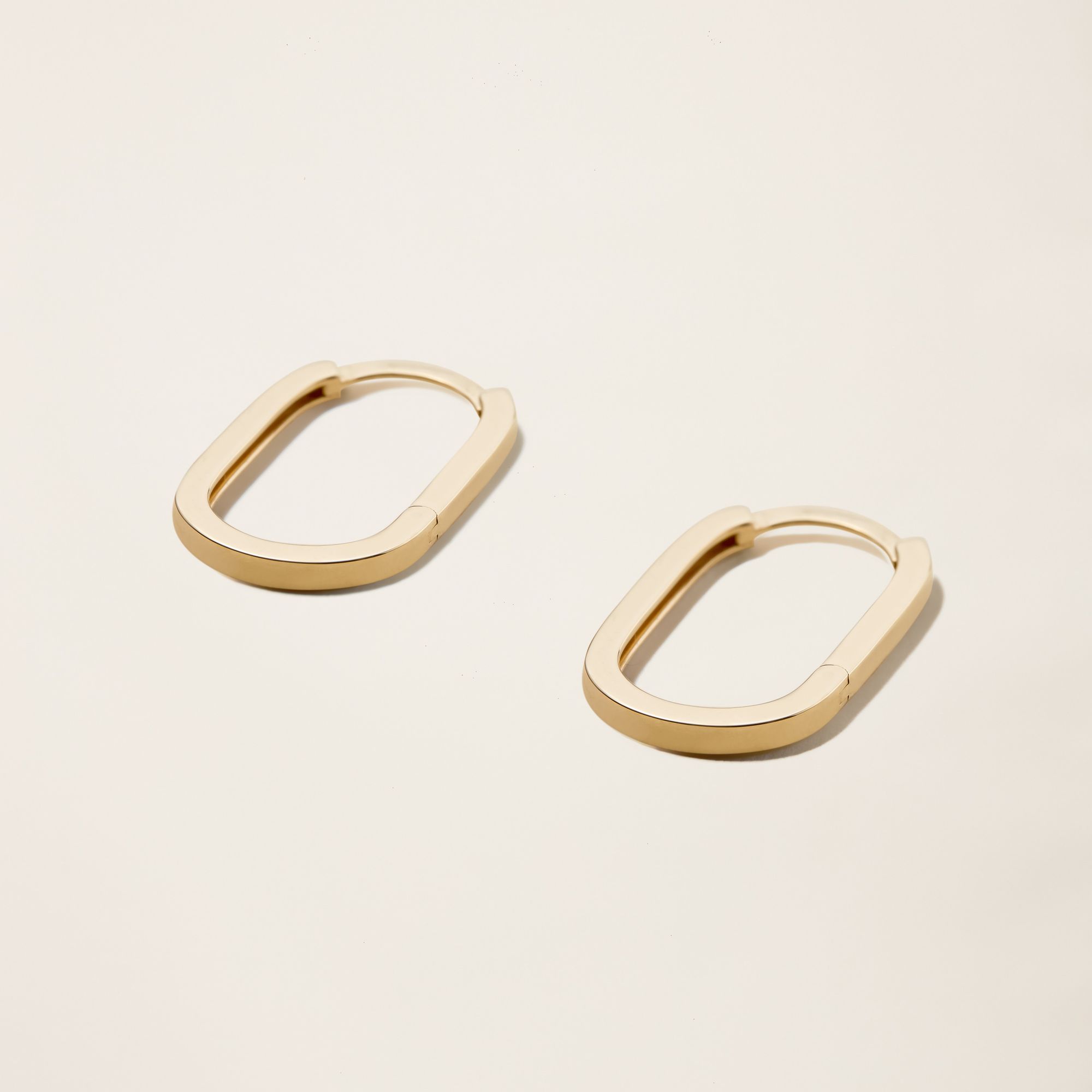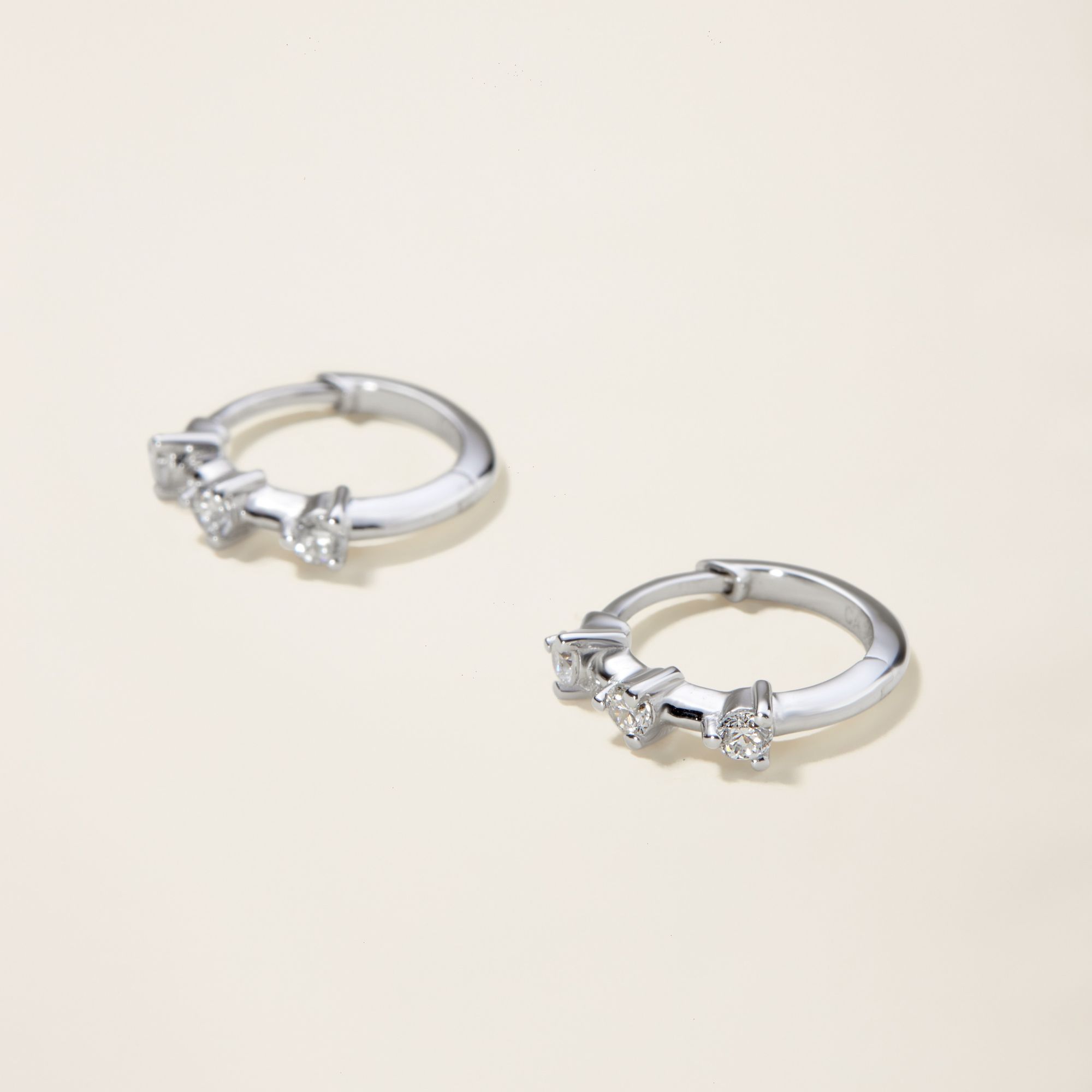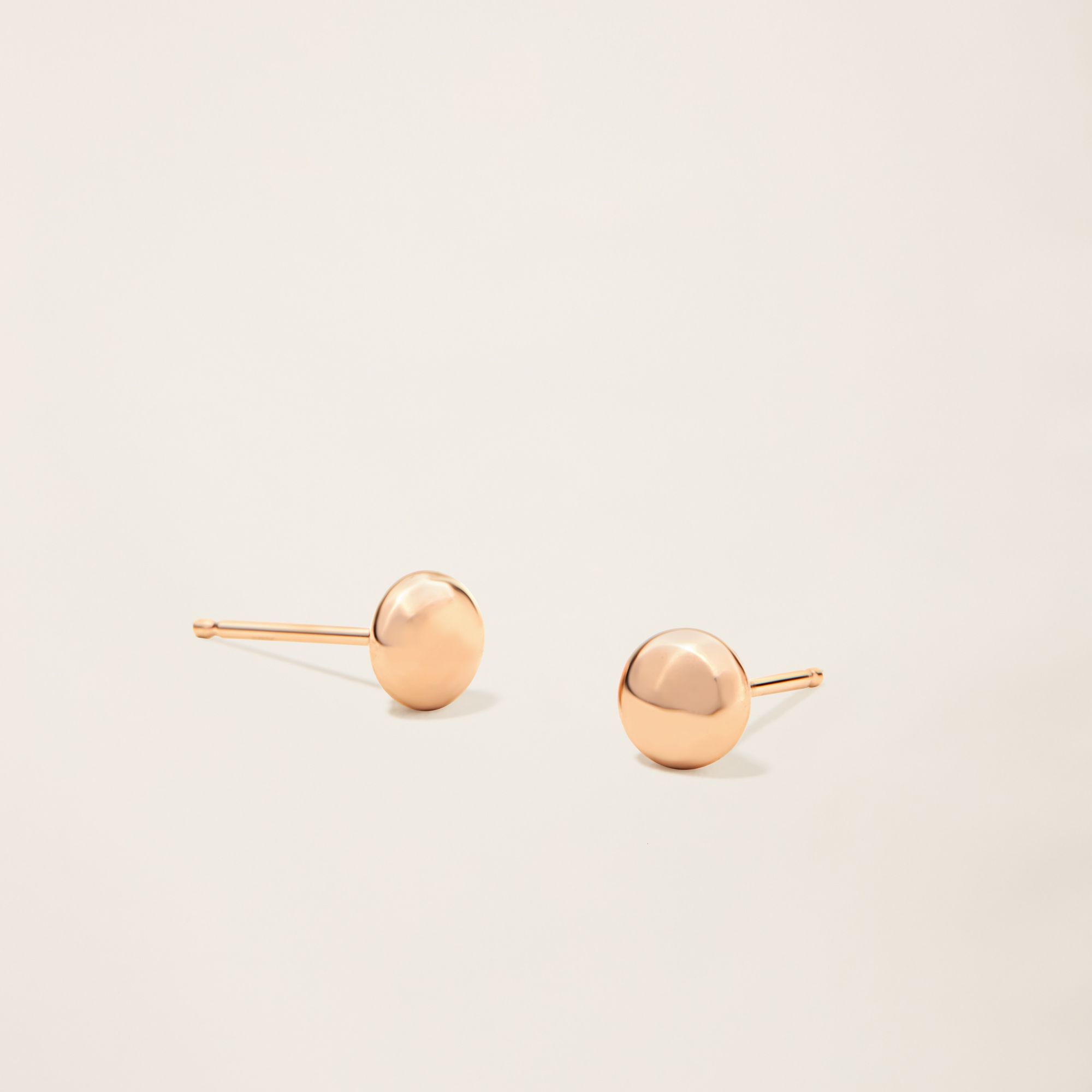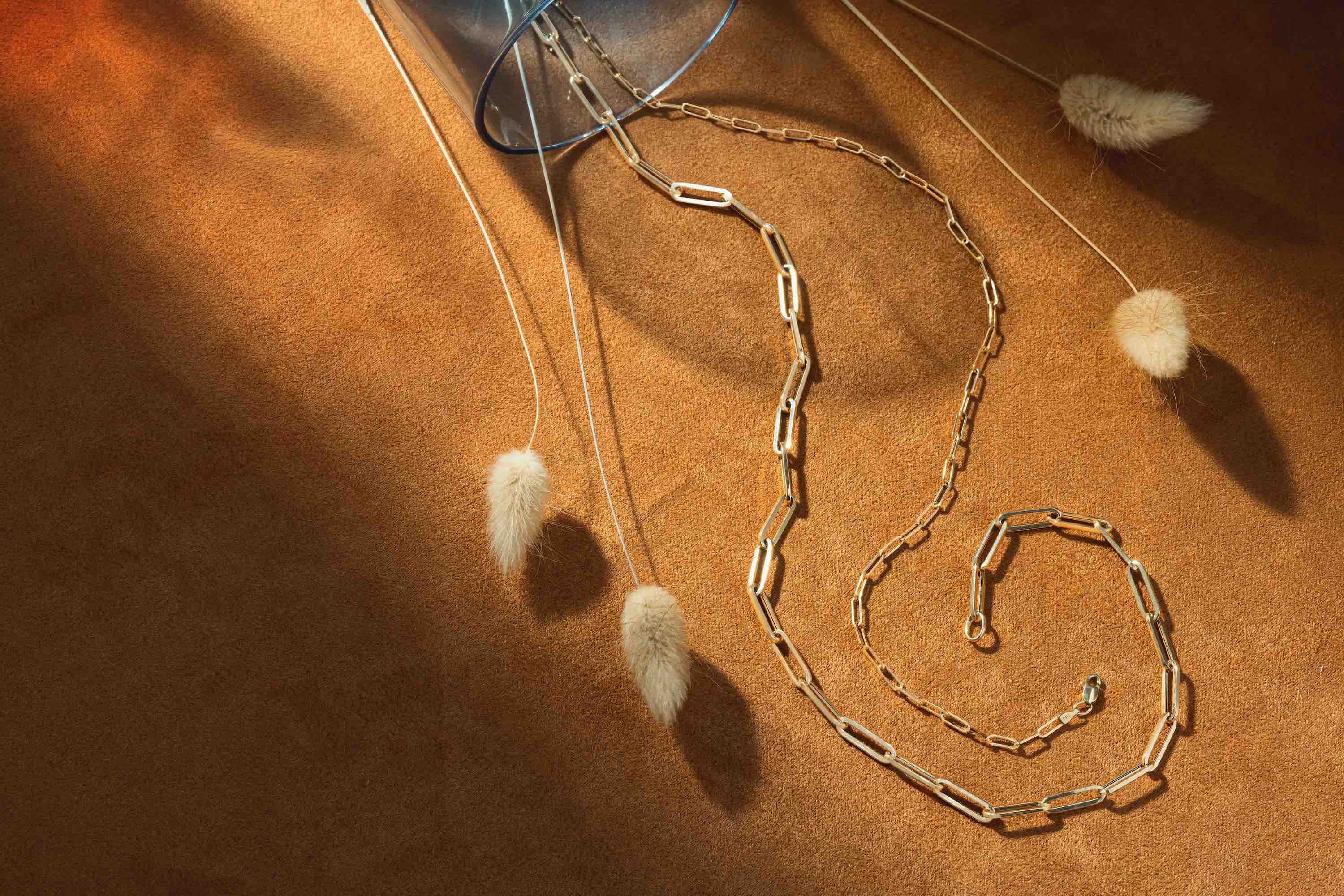Gold is one of the most sought-after precious metals in the world, and it's easy to see why. It's durable, stunning, and timeless. Unlike the many other metals found around the globe, gold has held and retained a high status because of three specific properties: scarcity, durability, and malleability.
With the rise in demand for gold, unfortunately, the market is flooded with fake or counterfeit gold.
In this article, we’ll walk you through how to tell if gold is real or fake. We’ll get you familiar with the types of gold, understand what sets gold apart, debunk myths disguised as methods, and let you in on the professional ways to actually tell gold’s authenticity.
What are the types of gold?
First, let’s cover the basics. Gold types can be categorized into three main characteristics: color, caratage, and fineness.
1. Color
Gold commonly comes in 4 main colors: yellow gold, white gold, rose gold, and green gold.
Yellow Gold
The most common and classic color type of gold, known for its warm and rich golden hue.


White Gold
A popular color type of gold that is created by mixing pure gold with white metals such as palladium or nickel, resulting in a silver-white color that is often used as a substitute for platinum.


Rose Gold
Also known as pink or red gold, is a trendy color type of gold that is created by adding copper to the gold alloy, resulting in a warm and romantic pinkish-red hue.


Green Gold
Also known as electrum, is a rare color type of gold that occurs naturally in some gold deposits, or can be created by mixing gold with silver and copper, resulting in a greenish-yellow color.
2. Caratage
Caratage determines the amount of pure gold in a piece of jewelry. As you know, pure gold is too soft and malleable for most practical uses, so it is alloyed with other metals. The caratage of gold indicates the proportion of pure gold in the alloy, with higher caratage indicating a greater percentage of pure gold. This affects its value, durability, and appearance.
24-carat Gold
First up, we have 24-carat gold, which is considered the purest form of gold. It's made up of 99.9% pure gold, and its bright yellow color is a sight to behold. Because it's so pure, it's often used for investment purposes or in high-end jewelry.
18-carat Gold
Next, we have 18-carat gold, which is a popular choice for jewelry. It's made up of 75% pure gold, with the remaining 25% made up of other metals, such as copper and silver. This makes it more durable and less prone to scratches than 24-carat gold, while still maintaining a rich, warm color.

14-carat Gold
14-carat gold is another popular choice for jewelry. It's made up of 58.3% pure gold, with the remaining 41.7% made up of other metals. It's less expensive than 18-carat gold, but still offers a beautiful and durable option for jewelry.
10-carat Gold
Finally, we have 10-carat gold, which is the least pure form of gold. It's made up of 41.7% pure gold and 58.3% other metals. It's often used in mass-produced jewelry because it's more affordable, but it's not as valuable as the higher carat options.
3. Fineness
Fineness is an alternate measure of the purity of gold, expressed as a fraction of 1,000 parts of pure gold in a gold alloy. Different types of gold have varying fineness levels, which can affect their value, durability, and suitability for different purposes.

Gold Plating Options

1. Gold plated
Gold plating involves applying (electroplating) a thin layer of gold to a base metal or alloy, such as brass or silver. The layer of gold is approximately 0.5 and 2.5 microns thick. Although gold plated products can be a less expensive option to solid gold jewelry, they are not as strong and long-lasting as solid gold since the thin covering of gold can fade with use and exposure to the weather over time.
2. Gold filled
Gold filled plating is a type of gold plating that includes bonding a thicker coating of gold to a base metal or alloy than gold plating. This produces a more robust and long-lasting gold coating than gold plating. With careful care, gold-filled artifacts can retain their color and luster for many years. They are frequently labeled with the initials "GF" or "1/20" to identify the gold content and filling technique.
3. Gold Vermeil
The process of gold vermeil involves electroplating the sterling silver with a layer of gold, typically ranging from 2.5 to 5 microns in thickness. Unlike gold plating or gold filled, gold vermeil is specifically limited to a sterling silver base, and the gold layer must be at least 2.5 microns thick to qualify as vermeil. Gold vermeil jewelry can be a more affordable alternative to solid gold jewelry, offering the durability and long-lasting shine of gold with the added benefit of a sterling silver base.
4. Solid Gold
Solid gold is not a type of gold plating, but rather refers to jewelry that is made entirely of gold and not mixed with any other metals. Solid gold is typically available in 14K, 18K, or 24K varieties, with 24K being the purest form of gold available. However, solid gold jewelry can be more expensive and may not be as practical for everyday wear, as the softness of pure gold can make it prone to scratching and bending.

Understanding Gold Purity
Carats and Fineness
Gold’s purity is typically measured in carats or fineness. Carats indicate the amount of pure gold in a piece of jewelry or other item, expressed as a fraction of 24. For example, 24-carat gold is considered 100% pure, while 18-carat gold is 75% pure (18/24).
Fineness is another way of expressing purity, typically measured in parts per thousand. For example, 999 fineness indicates that a piece of gold contains 999 parts pure gold out of 1,000. The higher the carat or fineness, the more pure the gold is.
Hallmark Stamps
A hallmark is a stamp or mark that is impressed onto a piece of gold to indicate its quality, purity, and origin. Hallmark stamps can include information such as the caratage, fineness, and the country of origin.
In some countries, such as the United States, hallmarking is not mandatory, but it can provide additional assurance to buyers that they are purchasing a genuine and high-quality piece of gold. The absence of a hallmark stamp does not necessarily mean that the gold is not pure, but it can make it more difficult to determine its purity without further testing.
Appearance and Weight
Color and Shine
Real gold typically has a distinct, rich yellow color and a bright, shiny luster that is difficult to replicate with fake materials. In contrast, fake gold may have a different color or lack the same shine and luster as real gold.
Density and Weight
Gold is a dense metal, which means that it has a relatively high weight for its size. If a piece of gold feels light or has a weight that seems inconsistent with its size, it may be a sign that it's not real. Additionally, fake gold is often made with materials that are less dense than gold, such as tungsten or copper, which can make it easier to detect with a simple weight comparison.
Magnet Test
The magnet test is a simple method to help determine if gold is real or fake. Gold is not magnetic, so if a piece of jewelry or other gold item is attracted to a magnet, it's likely not made of real gold. However, some fake gold items may not be magnetic, so this test is not always foolproof. For example, some counterfeit gold items are made with non-magnetic materials, such as copper or brass, that are then plated with a thin layer of gold. In these cases, the magnet test would not be sufficient to detect the fake gold.

Professional Testing
X-ray Fluorescence Spectrometry
X-ray fluorescence spectrometry is a highly professional method for determining the authenticity of gold. This technique involves using X-rays to excite the atoms in the gold sample, causing them to emit fluorescent X-rays that are characteristic of the elements present.
By analyzing the intensity and wavelength of these emitted X-rays, it is possible to identify the elements present in the sample and determine if the gold is genuine. X-ray fluorescence spectrometry is a non-destructive technique that can provide accurate and reliable results in a matter of seconds, making it an essential tool for anyone who needs to authenticate gold.
Fire Assay
Fire assay is a professional method for determining the authenticity of gold that has been used for centuries. This technique involves heating the gold sample to a high temperature in a special furnace, which causes it to release any impurities and leave behind a pure gold bead.
The weight of this bead can then be compared to the weight of the original sample to determine the percentage of gold present. Fire assay is a highly precise method that can detect even very small amounts of impurities, making it a popular choice for gold testing in the jewelry and investment industries. However, it is a time-consuming and destructive technique that requires skilled professionals to perform, so it may not be suitable for all applications.
Non-Destructive Testing
Non-destructive testing is a professional way to determine the authenticity of gold without damaging the sample. This technique involves using specialized equipment to analyze the physical and chemical properties of the gold sample, such as its density, electrical conductivity, and magnetic susceptibility.
By comparing these properties to those of known authentic gold samples, it is possible to determine if the gold is genuine or if it has been adulterated with other metals. Non-destructive testing is a fast and accurate method that is widely used in the jewelry and investment industries, as it allows for quick and reliable authentication without damaging the valuable gold sample.

Common Myths
You may have heard of these methods of testing gold before. However, they are not professional testing techniques for gold.
Bite Test
The bite test, a popular method of testing gold's authenticity, involves biting down on a gold item and observing whether or not it leaves teeth marks. However, this method is not considered a professional or reliable way to authenticate gold.
The human bite is not a precise measurement of hardness and can vary depending on factors such as age, tooth condition, and bite force. The bite test can also damage the gold item, leaving behind marks or even causing it to break or crack.
This test does not also account for gold-plated or gold-filled items, which may still leave teeth marks despite not being solid gold. Overall, the bite test is not a professional or recommended way to determine gold's authenticity.
Nitric Acid Test
The nitric acid test, also known as the "acid test," is a method of testing gold by applying nitric acid to the surface and observing its reaction. While this test can be useful in some situations, it is not considered the best way to determine gold's authenticity for several reasons.
Firstly, the acid test can damage the gold item, leaving behind unsightly marks or even causing it to corrode.
Secondly, the acid test only measures the surface purity of the gold and may not detect any impurities present deeper within the item. Additionally, the acid test cannot differentiate between different carats of gold, as the reaction will be the same regardless of the gold's purity.
Overall, while the nitric acid test can be a useful tool in some circumstances, it is not the most reliable or accurate way to determine gold's authenticity.
Ceramic Plate Test
The ceramic plate test, also known as the "smear test," is a method of testing gold's authenticity by rubbing the gold item against a ceramic plate and observing the color and texture of the streak left behind.
However, this test is not considered the best way to determine gold's authenticity for several reasons. Firstly, the ceramic plate test can damage the gold item, leaving behind scratches or scuffs that can reduce its value.
Secondly, the test is not reliable as it can produce false positive results when the gold is mixed with other metals or alloys that can produce a similar color streak on the ceramic plate.
A note from Italic.
Authenticating gold on your own can be a daunting task, but there are several professional techniques that can provide accurate and reliable results. While popular methods such as the bite test, nitric acid test, and ceramic plate test may be quick and easy, they are not considered the most reliable or accurate methods of authentication. It is important to consult with a reputable and experienced gold expert when in doubt about the authenticity of a gold item, as they will have the necessary knowledge and equipment to provide a reliable assessment.